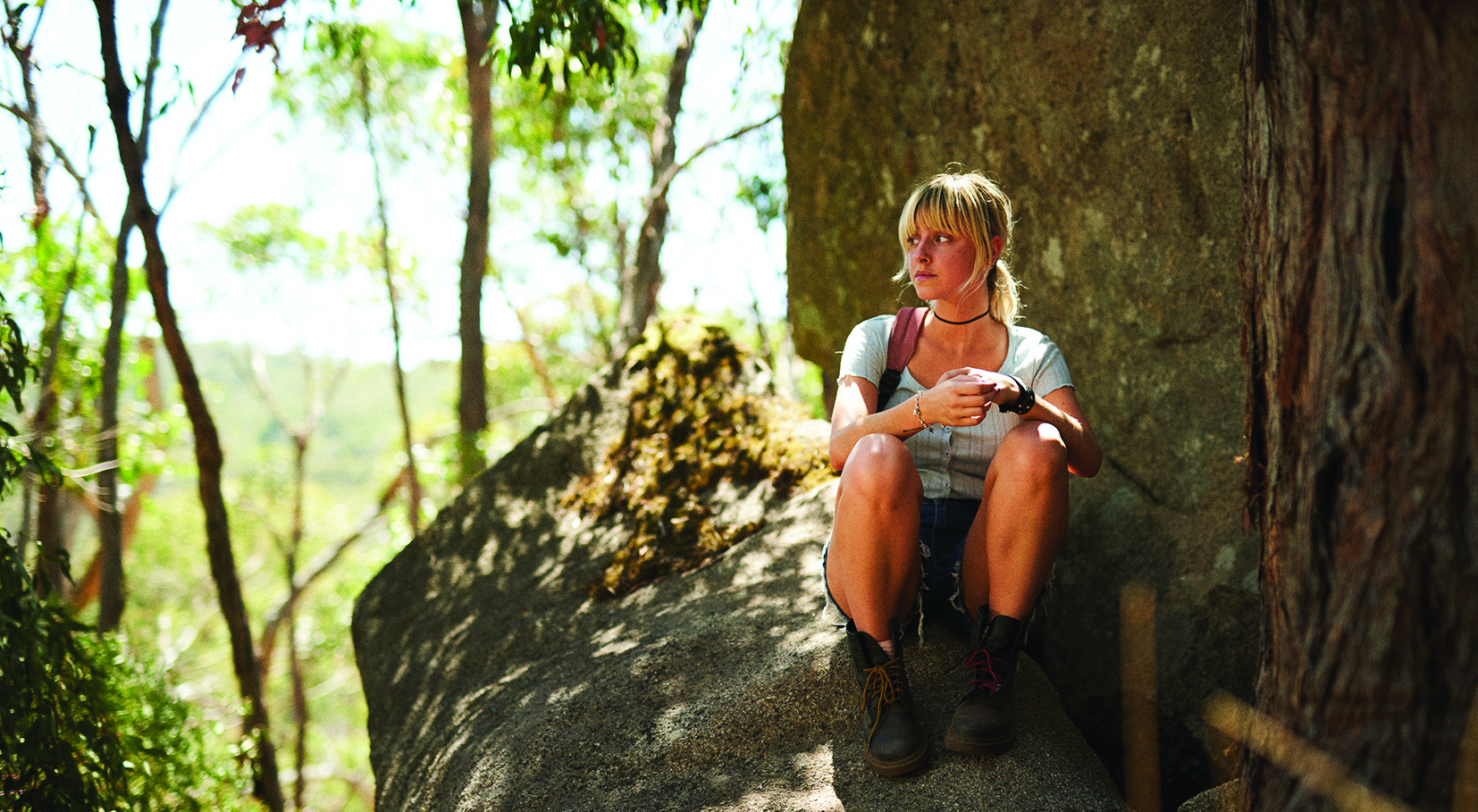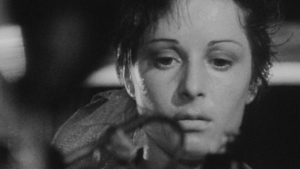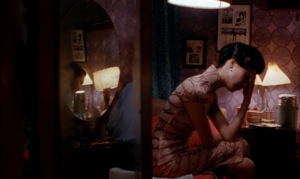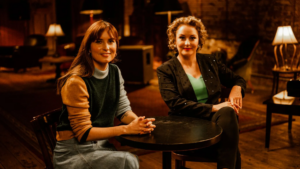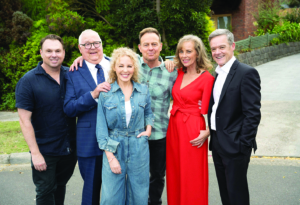You could say that ‘scrambling to adapt’ was the theme of the thirty-fifth Screen Forever Conference, held online by Screen Producers Australia from 16–18 February 2021. Over three days and forty sessions (featuring a total of 120 speakers), the Australian screen-production tribes gathered – albeit virtually – for their annual gabfest of knowledge sharing, policy analysis, pitching and deal making, with local and international speakers and buyers in attendance.
The conference itself had scrambled several times in the lead-up, pivoting and pirouetting as COVID-19 dictated: first, postponed from its traditional November slot; then planned as a mixed live/online event from the Gold Coast (the new home of the event); before finally being entirely streamed in February. It’s hoped another live conference can take place in November 2021, because nothing really substitutes for networking in a bar.
Of course, the entire industry was coming out of a year of scrambling to adapt, and the consensus was that it had done so admirably. In individual panels, we heard stories about writers and producers changing storylines and working modes to accommodate virus protocols. Shows like Home and Away cut kissing and handshakes from scripts and prevented characters from going on overseas holidays, and entire productions created bubbles so they could keep on working. At a broader level, Australia’s relatively COVID-free environment has made it an internationally appealing production setting, with many new opportunities arising.
We heard how, whether stuck at home or otherwise, everyone’s been watching more content than ever, but free-to-air linear TV is losing ground fast to the streamers. Advertising dollars are being redirected to eyeballs on Facebook, YouTube, Instagram and TikTok. What does that mean for local TV drama? It means less of it on those stations, and it means such shows must appeal to the dominant female demographic, and tie in tightly to the lead-in reality shows that tend to precede dramas. As Andy Ryan, head of drama at Nine, told a panel, the overall goal in recent, cash-strapped years has been to make shorter-run event-quality dramas that ‘added texture to the slate’ and ‘created noise’.
Do one-minute TikTok series really count as local drama? Yes, apparently; and connecting with young audiences – through whatever means makes that possible – is a key value for Screen Australia. Using these cheaper, shorter-run platforms to develop new talent is a great objective, but trying to turn such content into sustainable financial models for creators remains ‘challenging’ – if not a nearly impossible-to-win lottery.
The big-name drawcards at Screen Forever might have been US-based storytellers – such as The Handmaid’s Tale showrunner Bruce Miller, The Queen’s Gambit executive producer William Horberg and Sera Gamble, co-creator of shows You and The Magicians – but the really important discussions for the future of the industry were around policy and funding, because 2021 augurs nothing less than a policy earthquake for the Australian production sector. This is dry stuff with lots of numbers involved, but the implications are huge.
Art and commerce are never so intricately entwined as they are in the screen industry, with essential issues of national identity and representation swirling into the mix. The common lament at the conference was that successive federal governments – and, most starkly, the current one – don’t seem able to pull apart economic and cultural policy. They favour production activity of any kind over the telling of genuinely Australian stories.
The decision last year to provide A$400 million over the next seven years for international productions does very little for the domestic creative sector except provide competition for crews and locations. While everyone in the industry wants to make money, what’s it all for if we lose our Australian accents and our kids can’t see their way of life on screen in high-quality productions?
High on the agenda was the 2020 suspension of local-content sub-quotas for children’s programming for commercial TV. Jenny Buckland, CEO of the Australian Children’s Television Foundation – which has received an extra A$20 million funding boost as compensation for those networks exiting the sector – told a panel that the focus has to be on making premium children’s content rather than cheap-as-chips quota filling.
Many discussions were also had around proposed models for local-content obligations for streamers like Netflix and Amazon. Rather than content quotas, the sensible and likely model seems to be a contribution fund. The current local spend required of Foxtel is 5 per cent of Australian income (dropped from 10 per cent last year), but if this were applied to companies like Netflix, whose estimated income varies between A$500 million and A$1 billion, it would amount to under A$50 million a year, which is less than the company already spends here. The fact that producers sign away all their rights to the streamers in one-off deals is a separate issue.
The other seismic shift is the ‘harmonising’ of the Federal Government’s Producer Offset from 1 July 2021, raising it from 20 to 30 per cent for television, and reducing it for feature films from 40 to 30 per cent, with films needing a minimum spend of A$1 million to qualify. These changes are a very big deal for both of those sectors, and catastrophic for low-budget features, a traditional proving ground for distinctive voices.
At the box office, a lack of competition saw Australian films thrive over summer. In the weekend just before the conference, an unprecedented four out of five top-grossing titles were homegrown: The Dry, Penguin Bloom, Long Story Short and High Ground. Local films were tracking at an unheard-of 54 per cent of total box office for 2021. Yet, as Roadshow CEO Joel Pearlman told a panel about the future of theatrical feature filmmaking, mid-budget crime drama The Dry – which his company distributed – ‘simply would not have been made if 30 per cent was all that was available’.
Covering annual Screen Forever events is the ultimate way of taking the industry’s temperature – and the general diagnosis for this patient is that it’s fighting hard, being as nimble and creative as it can, and taking tough medicine when necessary. But if the policy underpinnings don’t support genuinely Australian stories and the small-to-medium-sized businesses that make them, then the long-term prognosis is concerning.
You could say that ‘scrambling to adapt’ was the theme of the thirty-fifth Screen Forever Conference, held online by Screen Producers Australia from 16–18 February 2021. Over three days and forty sessions (featuring a total of 120 speakers), the Australian screen-production tribes gathered – albeit virtually – for their annual gabfest of knowledge sharing, policy analysis, pitching and deal making, with local and international speakers and buyers in attendance.
The conference itself had scrambled several times in the lead-up, pivoting and pirouetting as COVID-19 dictated: first, postponed from its traditional November slot; then planned as a mixed live/online event from the Gold Coast (the new home of the event); before finally being entirely streamed in February. It’s hoped another live conference can take place in November 2021, because nothing really substitutes for networking in a bar.
Of course, the entire industry was coming out of a year of scrambling to adapt, and the consensus was that it had done so admirably. In individual panels, we heard stories about writers and producers changing storylines and working modes to accommodate virus protocols. Shows like Home and Away cut kissing and handshakes from scripts and prevented characters from going on overseas holidays, and entire productions created bubbles so they could keep on working. At a broader level, Australia’s relatively COVID-free environment has made it an internationally appealing production setting, with many new opportunities arising.
We heard how, whether stuck at home or otherwise, everyone’s been watching more content than ever, but free-to-air linear TV is losing ground fast to the streamers. Advertising dollars are being redirected to eyeballs on Facebook, YouTube, Instagram and TikTok. What does that mean for local TV drama? It means less of it on those stations, and it means such shows must appeal to the dominant female demographic, and tie in tightly to the lead-in reality shows that tend to precede dramas. As Andy Ryan, head of drama at Nine, told a panel, the overall goal in recent, cash-strapped years has been to make shorter-run event-quality dramas that ‘added texture to the slate’ and ‘created noise’.
Do one-minute TikTok series really count as local drama? Yes, apparently; and connecting with young audiences – through whatever means makes that possible – is a key value for Screen Australia. Using these cheaper, shorter-run platforms to develop new talent is a great objective, but trying to turn such content into sustainable financial models for creators remains ‘challenging’ – if not a nearly impossible-to-win lottery.
The big-name drawcards at Screen Forever might have been US-based storytellers – such as The Handmaid’s Tale showrunner Bruce Miller, The Queen’s Gambit executive producer William Horberg and Sera Gamble, co-creator of shows You and The Magicians – but the really important discussions for the future of the industry were around policy and funding, because 2021 augurs nothing less than a policy earthquake for the Australian production sector. This is dry stuff with lots of numbers involved, but the implications are huge.
Art and commerce are never so intricately entwined as they are in the screen industry, with essential issues of national identity and representation swirling into the mix. The common lament at the conference was that successive federal governments – and, most starkly, the current one – don’t seem able to pull apart economic and cultural policy. They favour production activity of any kind over the telling of genuinely Australian stories.
The decision last year to provide A$400 million over the next seven years for international productions does very little for the domestic creative sector except provide competition for crews and locations. While everyone in the industry wants to make money, what’s it all for if we lose our Australian accents and our kids can’t see their way of life on screen in high-quality productions?
High on the agenda was the 2020 suspension of local-content sub-quotas for children’s programming for commercial TV. Jenny Buckland, CEO of the Australian Children’s Television Foundation – which has received an extra A$20 million funding boost as compensation for those networks exiting the sector – told a panel that the focus has to be on making premium children’s content rather than cheap-as-chips quota filling.
Many discussions were also had around proposed models for local-content obligations for streamers like Netflix and Amazon. Rather than content quotas, the sensible and likely model seems to be a contribution fund. The current local spend required of Foxtel is 5 per cent of Australian income (dropped from 10 per cent last year), but if this were applied to companies like Netflix, whose estimated income varies between A$500 million and A$1 billion, it would amount to under A$50 million a year, which is less than the company already spends here. The fact that producers sign away all their rights to the streamers in one-off deals is a separate issue.
The other seismic shift is the ‘harmonising’ of the Federal Government’s Producer Offset from 1 July 2021, raising it from 20 to 30 per cent for television, and reducing it for feature films from 40 to 30 per cent, with films needing a minimum spend of A$1 million to qualify. These changes are a very big deal for both of those sectors, and catastrophic for low-budget features, a traditional proving ground for distinctive voices.
At the box office, a lack of competition saw Australian films thrive over summer. In the weekend just before the conference, an unprecedented four out of five top-grossing titles were homegrown: The Dry, Penguin Bloom, Long Story Short and High Ground. Local films were tracking at an unheard-of 54 per cent of total box office for 2021. Yet, as Roadshow CEO Joel Pearlman told a panel about the future of theatrical feature filmmaking, mid-budget crime drama The Dry – which his company distributed – ‘simply would not have been made if 30 per cent was all that was available’.
Covering annual Screen Forever events is the ultimate way of taking the industry’s temperature – and the general diagnosis for this patient is that it’s fighting hard, being as nimble and creative as it can, and taking tough medicine when necessary. But if the policy underpinnings don’t support genuinely Australian stories and the small-to-medium-sized businesses that make them, then the long-term prognosis is concerning.
